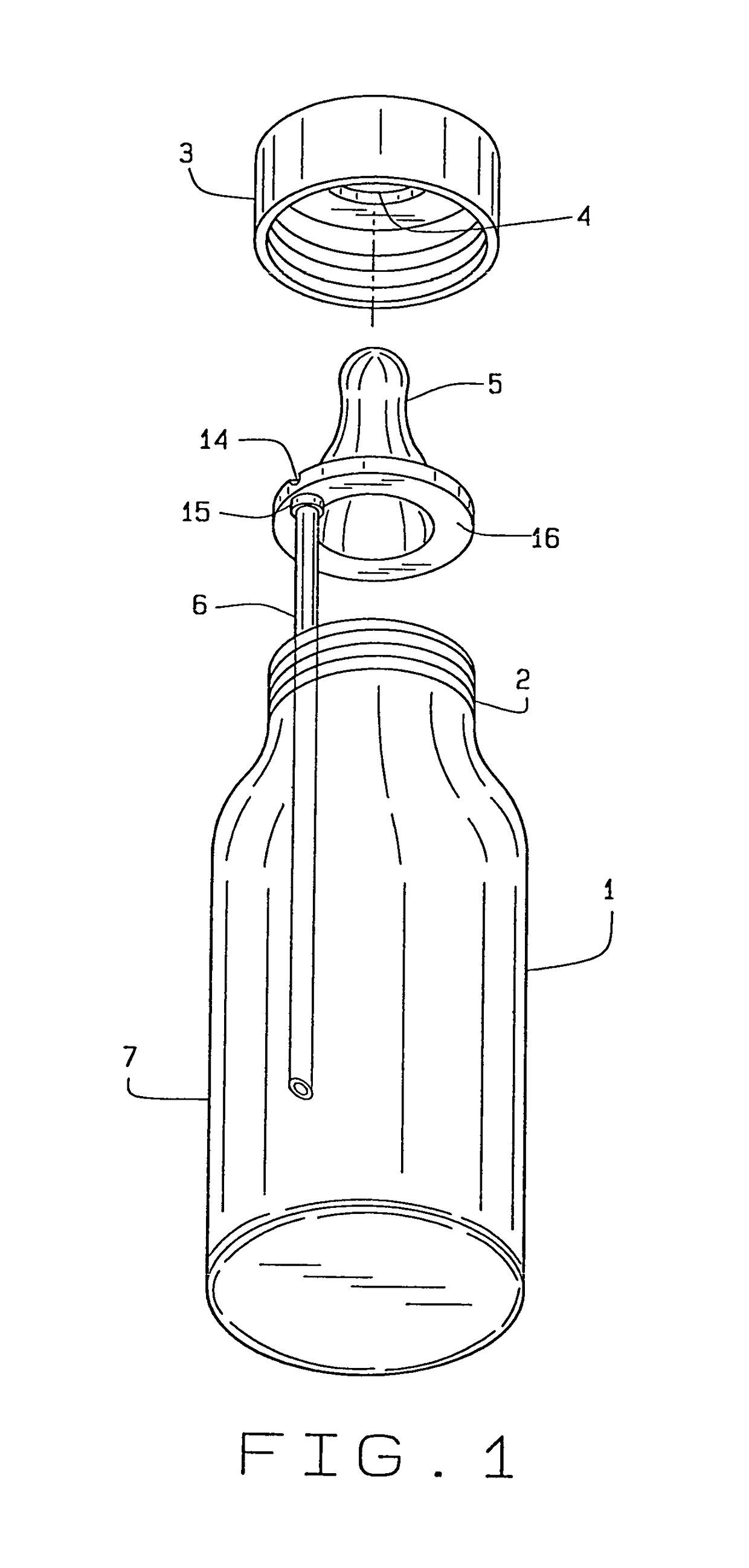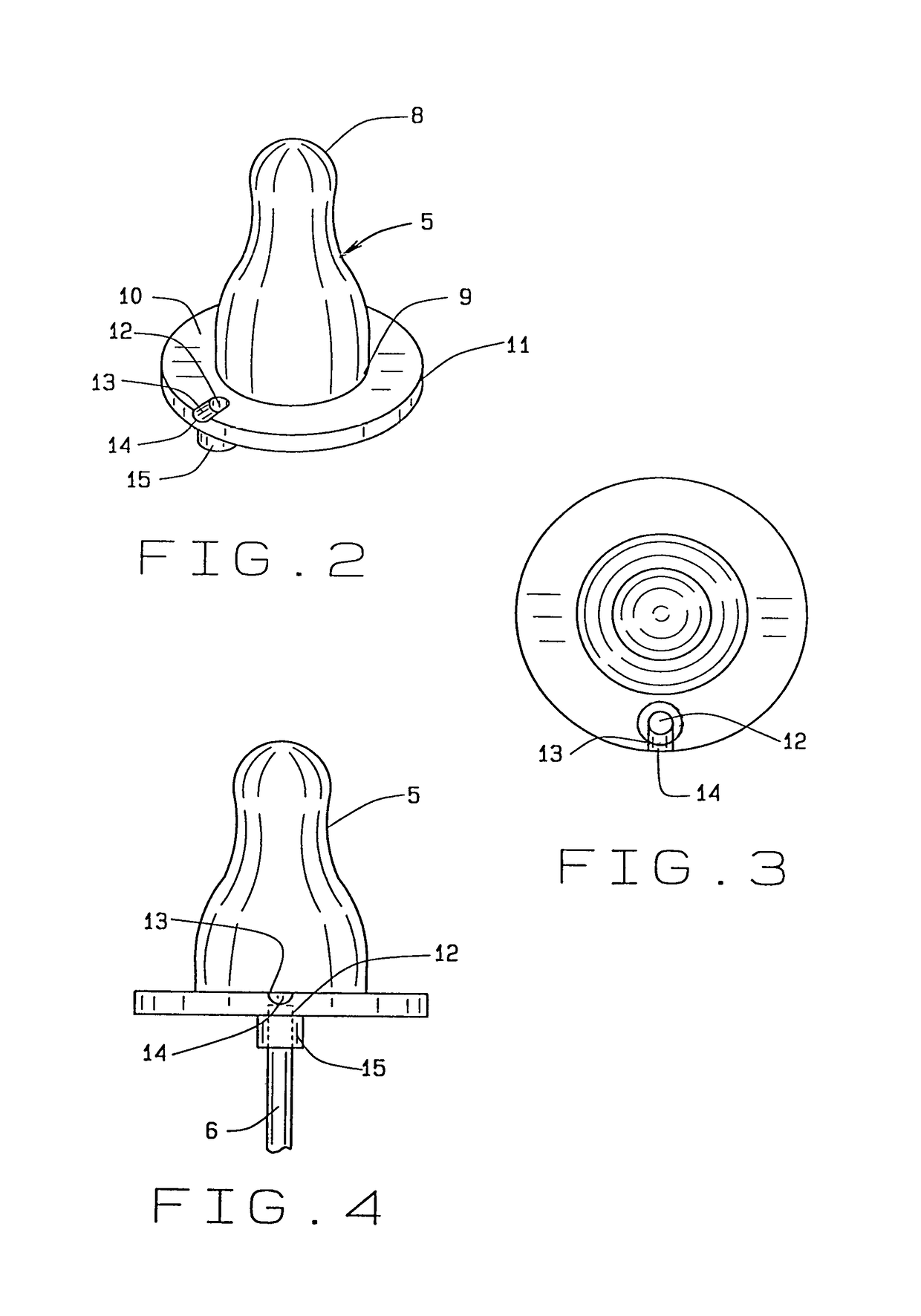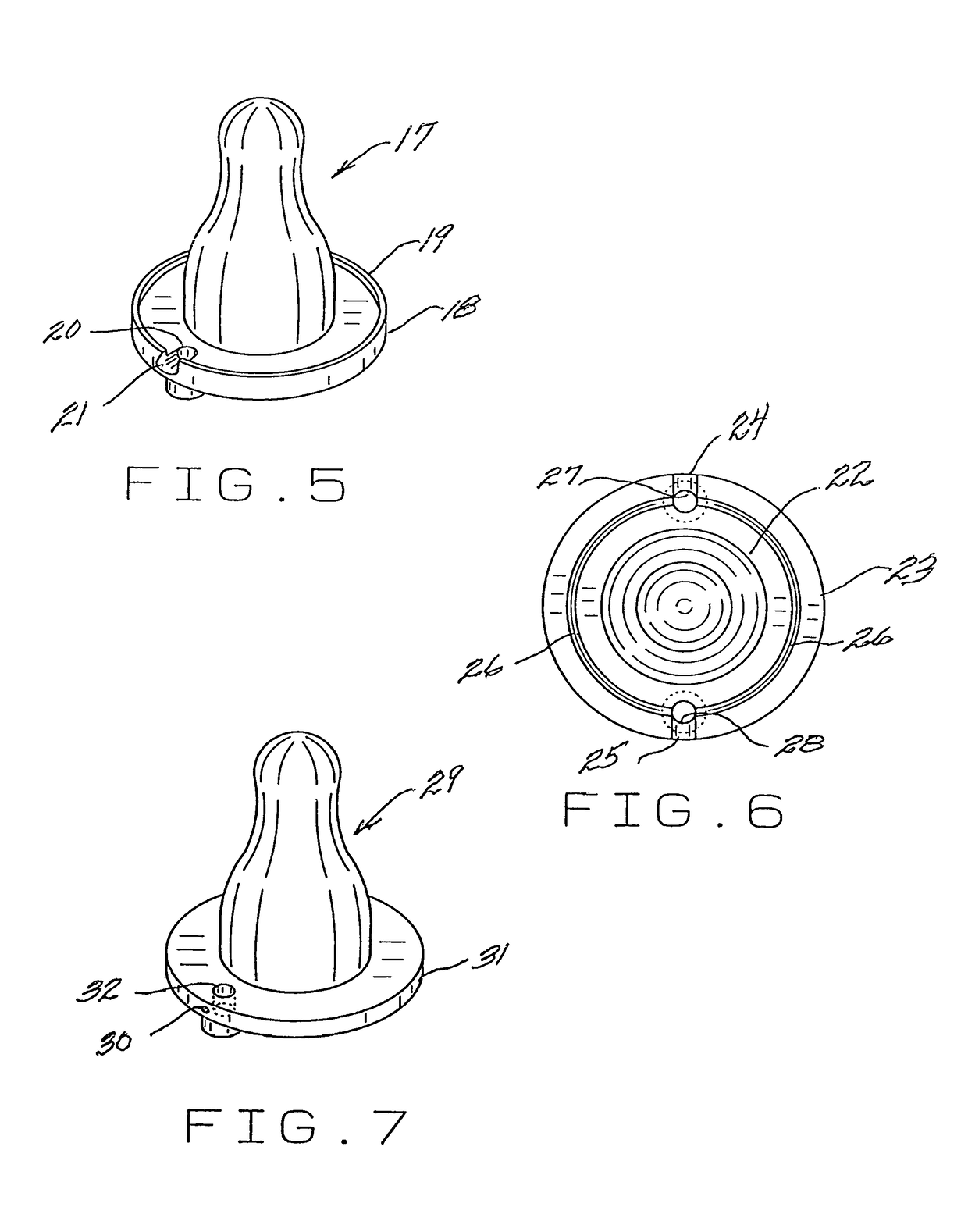Nursing bottle with integrated collar and nipple flange venting structure
a venting structure and nursing bottle technology, applied in the field of nursing bottles, can solve the problems of significant amount of liquid spillage, unbalanced feeding, and affecting the physiological function of feeding, and achieve the effect of optimal physiological feeding, convenient and economical cleaning
- Summary
- Abstract
- Description
- Claims
- Application Information
AI Technical Summary
Benefits of technology
Problems solved by technology
Method used
Image
Examples
Embodiment Construction
[0060]In referring to the drawings, and in particular FIG. 1, therein is shown the bottle or container 1 which in this particular instance, may comprise a regular wide mouth nursing bottle, as noted. It has threads 2, normally, upon its upper neck portion, as shown, and a threaded collar, as at 3, secures onto the threaded neck of the bottle, as can be understood. Usually the collar has an aperture 4 provided therethrough, and it locates the nursing bottle nipple 5 in place, during usage. Usually, when the threaded collar 3 is applied to the threaded neck 2 of the bottle, it provides for a reasonably snug fit of these components, securing the nipple in place, and therein preventing any lateral leakage of formula from the bottom, allowing it primarily to exist from the apertures provided at the upper end of the nipple, as known in the art.
[0061]As can be also be seen, internally of the bottle, is a vent tube 6 that extends downwardly into proximity, as at its bottom end 7, towards th...
PUM
 Login to View More
Login to View More Abstract
Description
Claims
Application Information
 Login to View More
Login to View More - R&D
- Intellectual Property
- Life Sciences
- Materials
- Tech Scout
- Unparalleled Data Quality
- Higher Quality Content
- 60% Fewer Hallucinations
Browse by: Latest US Patents, China's latest patents, Technical Efficacy Thesaurus, Application Domain, Technology Topic, Popular Technical Reports.
© 2025 PatSnap. All rights reserved.Legal|Privacy policy|Modern Slavery Act Transparency Statement|Sitemap|About US| Contact US: help@patsnap.com



